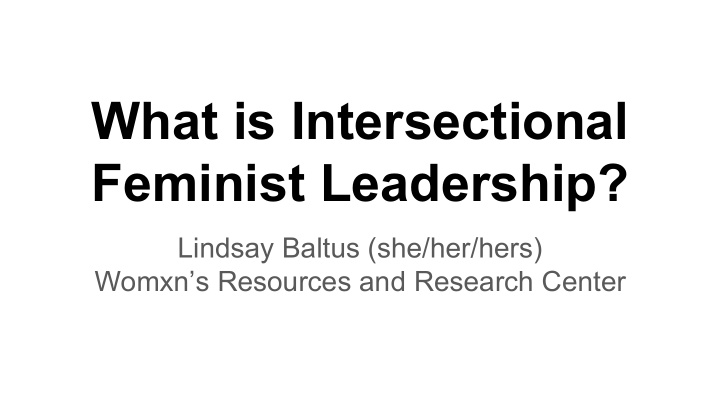



What is Intersectional Feminist Leadership? Lindsay Baltus (she/her/hers) Womxn’s Resources and Research Center
Learning Objectives At the end of this workshop, participants will be able to: ● Articulate basic definitions of intersectionality, sex, gender, sexism and cissexism ● Examine how social constructs and systems of power, including gender, sexism, and cissexism, impact work environments and notions of leadership ● Imagine at least one way you can bring intersectional feminism to bear on your own leadership style
Community Agreements ● Inclusive Language ● Plant the Seed ● Snaps for Affirmation ● Nourish and Self-Care ● Shared² ● Others?
Overview ● Discussion: What is a leader? ● Key terms & definitions ● Discussion: Our own identities ● Takeaways: What can we do?
Think/Pair/Share When you think of a leader, who comes to mind? What does a leader look and act like? What does a leader do?
Key Terms ● Gender ● Sex ● Sexism ● Cissexism ● Gender equity ● Intersectionality ● Intersectional feminism
Examples of Social Identifiers ● Ability ● Educational Background ● Age ● Academic/Social Achievement ● Ethnicity ● Family of Origin, Family Make Up ● Gender ● Geographic/Regional Background ● Race ● Language ● Religion ● Learning Style ● Sexual Orientation ● ? ● Socioeconomic Status (Class)
Think/Pair Think of 1-2 ways your own identities have impacted the way you work and learn. How is your own leadership style related to your intersecting identities?
Takeaways Based on what you’ve learned today, brainstorm 1-2 ways you can create working and learning environments that are more equitable and intersectional.
Recommend
More recommend